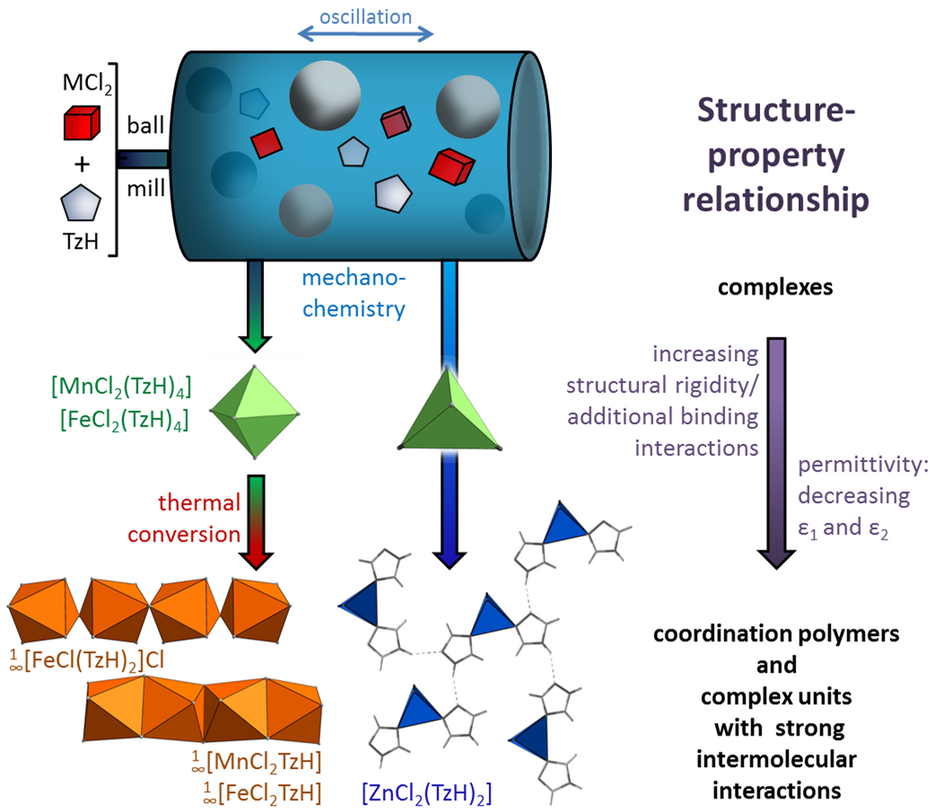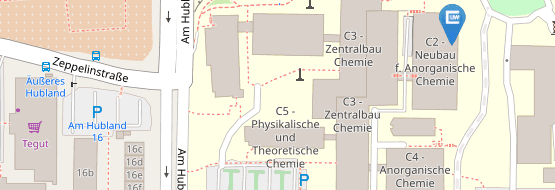Dielectric Coordination Polymers and Compounds from Microscopic Insulators to Potential Gating Materials by Combination of Mechanochemistry, Microwaves and Heat
01/25/2016By combining common transition metal chlorides and 1,2,4-1H-triazole under a range of different conditions, the research group of Prof. Dr. Klaus Müller-Buschbaum (Institut für Anorganische Chemie) has realised a library of compounds with potential use as dielectric elements in electronics. The compounds prepared, with diverse structures from discrete complexes to extended coordination polymers, were shown to have dielectric properties ranging from "low-k" to "high-k". So-called "low-k" dielectric materials are expected to be important components as microscopic insulators in future electronic devices, and high-k materials have the potential to gate microcurrents.
While the individual compounds themselves have potential as functional electronic components, more encouraging still is the ability to tune the permittivity of the materials: deliberate combination of mechanochemistry, microwave-assisted reactions and thermal conversions allowed the researchers to switch between different constitutions and permittivities. Some compounds were also found to exhibit frequency-independent behaviour with very low dielectric values, making them promising candidates for molecular dielectric insulators.
The research was published recently in the journal Chemistry - A European Journal (Franziska A. Brede, Johanna Heine, Gerhard Sextl and Klaus Müller-Buschbaum, "Mechanochemistry for 3d-TM Triazole Complexes as Precursors for Microwave Assisted and Thermal Conversion to Coordination Polymers with High Impact on the Dielectric Properties", Chem. – Eur. J., 2016, DOI: 10.1002/chem.201503725). Link to paper: http://onlinelibrary.wiley.com/doi/10.1002/chem.201503725/full


![[Translate to Englisch:] [Translate to Englisch:]](/fileadmin/_processed_/d/f/csm_FrontICBC2_1dbc3f66ed.jpg)
![[Translate to Englisch:] [Translate to Englisch:]](/fileadmin/_processed_/4/c/csm_IAC_Back_958d8b320b.png)

